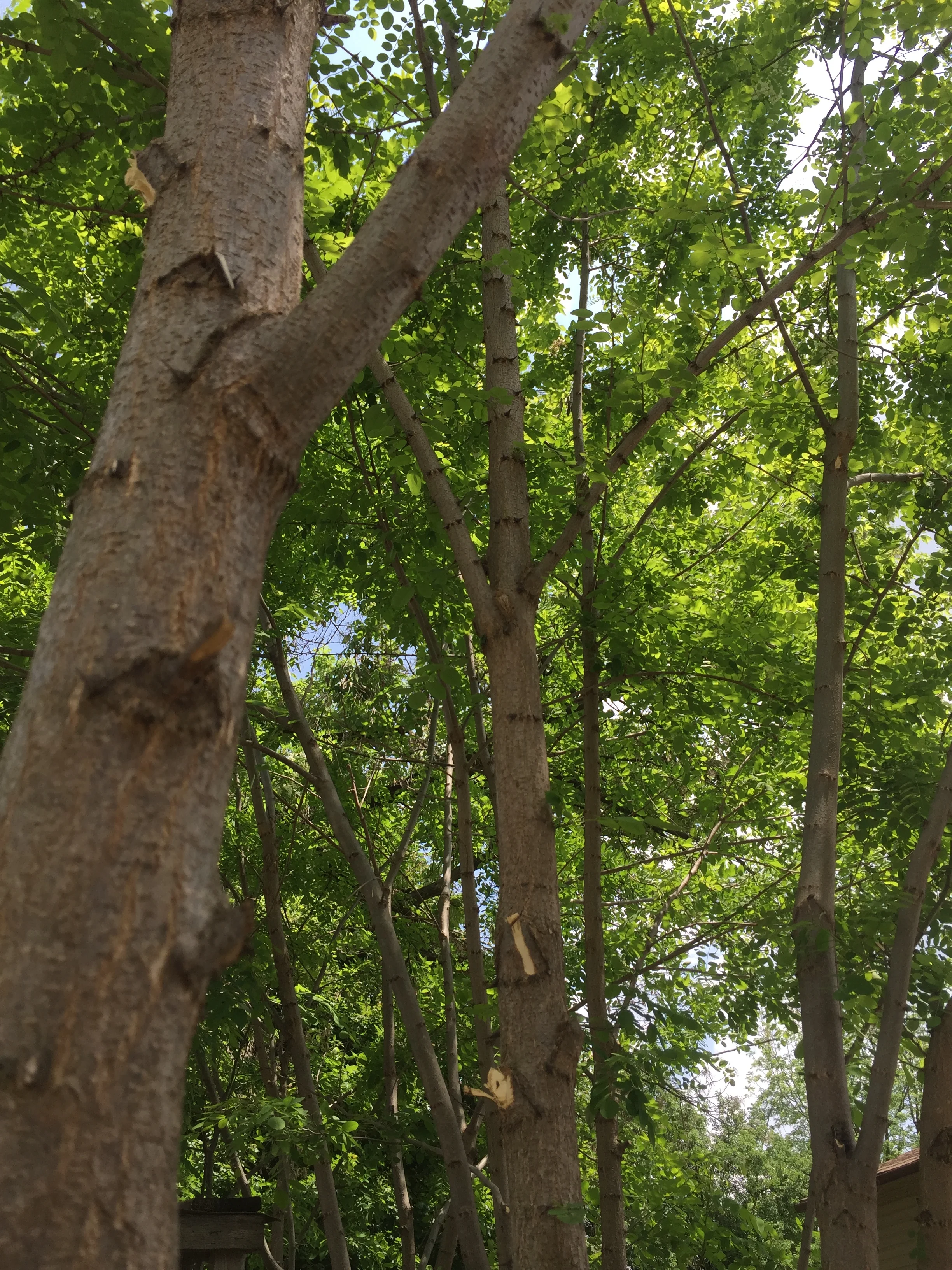Black Locust






Black Locust
Robinia Pseudoacacia
Plant for windbreaks, shelterbelts, and shade; as dense coppice rows; as fodder in silvopasture grazing rotations; and as a nitrogen-fixing nurse plant that restores harmed land!
Hardy from Zone 3-8. 50-80 feet tall 35-50 feet wide.
Jesuit missionaries, believing that Robinia sustained John the Baptizer in the wilderness, christened this tree with the name locust. Unfortunately for their linguistic piety, Black Locust is only indigenous to North America, which means John never met Robinia. Black Locust grew up here in what’s now the Eastern United States but has now been planted worldwide, comprising 20% of Hungary’s forests, where they were planted for reforestation in the 1700s and its natural twistiness bred into a straight form.
We’re very excited to grow this energetic tree! Jaw-droppingly fast-growing, fixes nitrogen for themselves and neighbors, the flowers taste like sweet peas and are a major nectar source for honey, a rot-resistant fencepost that can last over 100 years in the soil, one of the best fuelwoods in the world with a heat content rivaling anthracite coal, a renowned timber tree in other countries (though the Locust Borer in the U.S. often prevents the tree from reaching timber value), leaves are a protein-rich feed (20%) comparable to alfalfa for ruminants and rabbits, and traditional medicine in India uses parts of the tree as a laxative, antispasmodic (relieves spasms), and diuretic (assists urination)! What’s not to love about it?
Not everyone feels the love because this tree has a vigorous tendency to spread, sometimes earning it the label “invasive.” However, we believe that’s ascribing to the plant a character trait that is actually more about the relationship between the plant and the ecosystem. Black Locust spreads through root suckers to form thickets in degraded eroded soil, often fields that have been disturbed by us! Thorns on young branches form an effective fence to give the soil time to heal and rebuild with the nitrogen-fixing help of the roots. We think the suckering habit can be an incredible benefit if we learn to work with it through coppicing: periodically cutting the tree to the ground to stimulate new growth which can then be trained as multi-stemmed trunks. On a healthy rotation, coppicing or pollarding (pruning above animal browse height) Black Locust is an incredible way to reinvigorate tree growth while producing firewood, fence and hop posts, and releasing nitrogen into the soil. Black Locust’s small leaves cast a speckled shade which allows enough light for understory forage or trees that will eventually take over as the canopy. See our friend Steve Gabriel’s article about Black Locust for more inspiring information!
We propagate our Black Locust from seeds we gather from our trees.